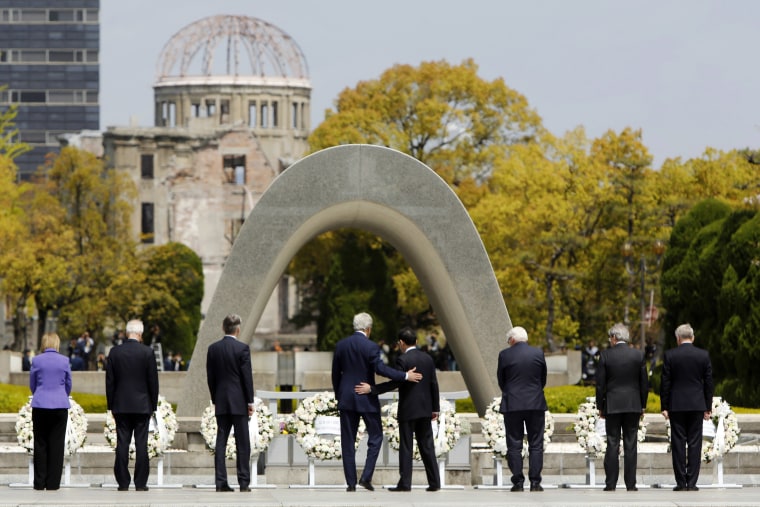TOKYO — Secretary of State John Kerry became the highest-ranking U.S. official to visit the Hiroshima Peace Park Memorial on Monday when he laid a wreath paying his respects to those who died when the U.S. dropped atomic bombs on Japan.
Kerry also described a museum there as "stunning" and "gut-wrenching" and said it was a reminder to all in public life to work for a world free of nuclear weapons.
His appearance, just footsteps away from Ground Zero, completed an evolution for the United States, whose leaders avoided the city for many years because of political sensitivities.
During a bilateral meeting with his Japanese counterpart earlier, Kerry said: "While we will revisit the past and honor those who perished, this trip is not about the past. It's about the present and the future."

The United States dropped an atomic bomb on Hiroshima — which killed an estimated 140,000 people — on Aug. 6, 1945. Nagasaki was hit three days later.
For decades, the United States avoided sending an envoy to Hiroshima because of the debate over the bombings.
Many Americans believe the atomic attacks were justified and hastened the end of the war. However, Japanese survivors' groups have campaigned for decades to bring leaders from the U.S. and other nuclear powers to see Hiroshima's scars as part of a grassroots movement to abolish such weapons.
It was not until 2010 that the then-ambassador to Japan, John Roos, attended the annual memorial service.
Monday's event coincided with a G-7 foreign ministers' meeting in Hiroshima, where leaders discussed issues ranging from the Middle East crisis, North Korea's missiles and nuclear tests and China's military encroachment in the South China Sea.
However, the visit to the atomic bomb memorial eclipsed all other topics for Japan's media.
Related: Hiroshima Anniversary — What to Know About Nuclear Weapons
Japanese Foreign Minister Fumio Kishida — who reportedly worked hard to make Monday's visit happen — told reporters: "This is a historic day being able to visit the Hiroshima Peace Park with Secretary Kerry and also the other G-7 foreign ministers. My hope is that this sends out a strong and clear message for peace from Hiroshima to the rest of the world."
Next month, President Barack Obama is expected to attend the G-7 Summit in Ise-Shima.
Local media have speculated that Obama may also consider visiting Hiroshima while in Japan.
A senior U.S. official traveling with Kerry told The Associated Press on condition of anonymity that the president hasn't made a final decision. During his first year in office, Obama said he would be "honored" to visit Hiroshima.